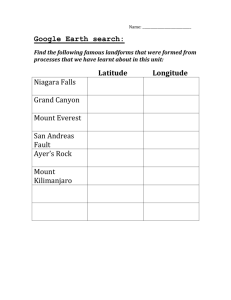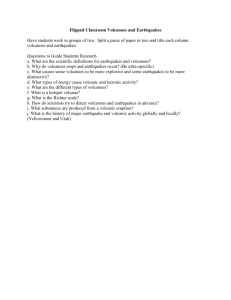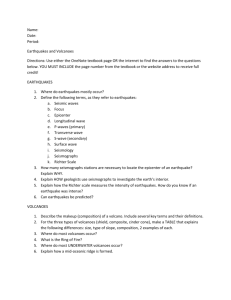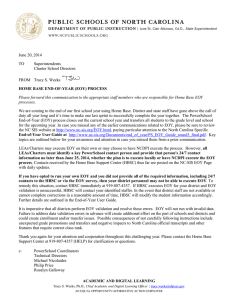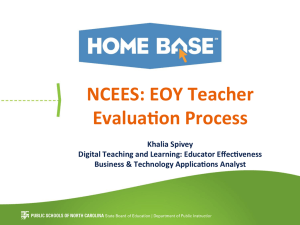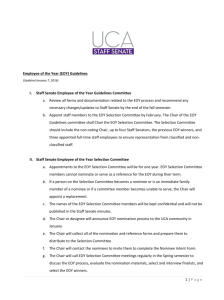eoy simple pp 2015-16
advertisement
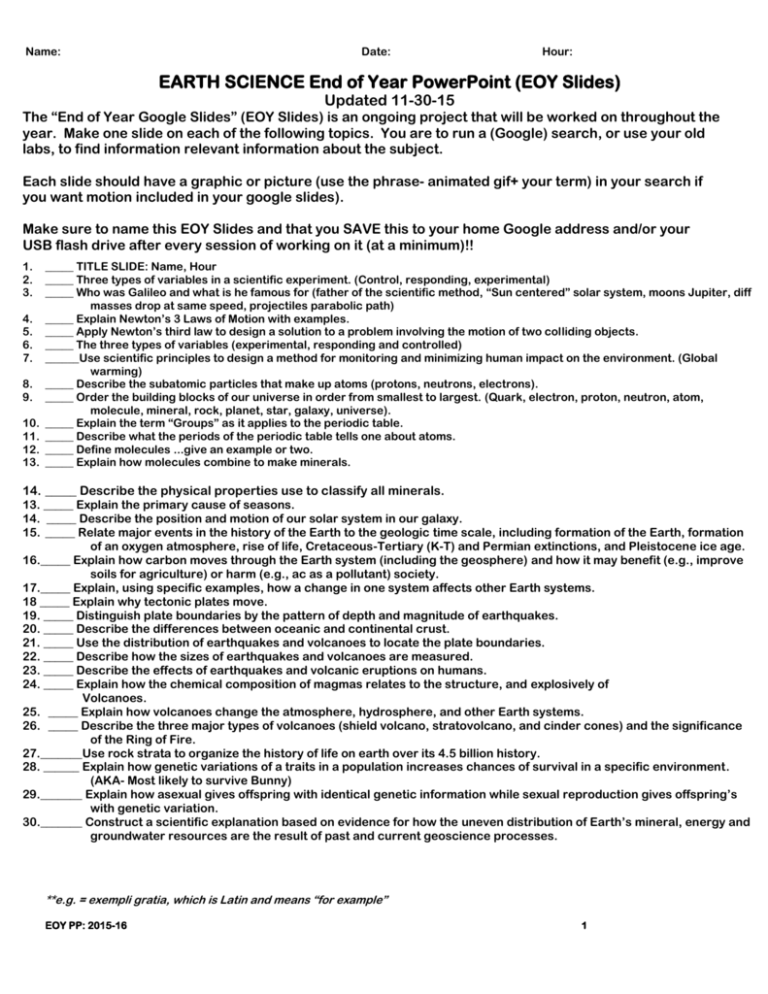
Name: Date: Hour: EARTH SCIENCE End of Year PowerPoint (EOY Slides) Updated 11-30-15 The “End of Year Google Slides” (EOY Slides) is an ongoing project that will be worked on throughout the year. Make one slide on each of the following topics. You are to run a (Google) search, or use your old labs, to find information relevant information about the subject. Each slide should have a graphic or picture (use the phrase- animated gif+ your term) in your search if you want motion included in your google slides). Make sure to name this EOY Slides and that you SAVE this to your home Google address and/or your USB flash drive after every session of working on it (at a minimum)!! 1. 2. 3. 4. 5. 6. 7. 8. 9. 10. 11. 12. 13. _____ TITLE SLIDE: Name, Hour _____ Three types of variables in a scientific experiment. (Control, responding, experimental) _____ Who was Galileo and what is he famous for (father of the scientific method, “Sun centered” solar system, moons Jupiter, diff masses drop at same speed, projectiles parabolic path) _____ Explain Newton’s 3 Laws of Motion with examples. _____ Apply Newton’s third law to design a solution to a problem involving the motion of two colliding objects. _____ The three types of variables (experimental, responding and controlled) ______Use scientific principles to design a method for monitoring and minimizing human impact on the environment. (Global warming) _____ Describe the subatomic particles that make up atoms (protons, neutrons, electrons). _____ Order the building blocks of our universe in order from smallest to largest. (Quark, electron, proton, neutron, atom, molecule, mineral, rock, planet, star, galaxy, universe). _____ Explain the term “Groups” as it applies to the periodic table. _____ Describe what the periods of the periodic table tells one about atoms. _____ Define molecules ...give an example or two. _____ Explain how molecules combine to make minerals. 14. _____ Describe the physical properties use to classify all minerals. 13. _____ Explain the primary cause of seasons. 14. _____ Describe the position and motion of our solar system in our galaxy. 15. _____ Relate major events in the history of the Earth to the geologic time scale, including formation of the Earth, formation of an oxygen atmosphere, rise of life, Cretaceous-Tertiary (K-T) and Permian extinctions, and Pleistocene ice age. 16._____ Explain how carbon moves through the Earth system (including the geosphere) and how it may benefit (e.g., improve soils for agriculture) or harm (e.g., ac as a pollutant) society. 17._____ Explain, using specific examples, how a change in one system affects other Earth systems. 18 _____ Explain why tectonic plates move. 19. _____ Distinguish plate boundaries by the pattern of depth and magnitude of earthquakes. 20. _____ Describe the differences between oceanic and continental crust. 21. _____ Use the distribution of earthquakes and volcanoes to locate the plate boundaries. 22. _____ Describe how the sizes of earthquakes and volcanoes are measured. 23. _____ Describe the effects of earthquakes and volcanic eruptions on humans. 24. _____ Explain how the chemical composition of magmas relates to the structure, and explosively of Volcanoes. 25. _____ Explain how volcanoes change the atmosphere, hydrosphere, and other Earth systems. 26. _____ Describe the three major types of volcanoes (shield volcano, stratovolcano, and cinder cones) and the significance of the Ring of Fire. 27._______Use rock strata to organize the history of life on earth over its 4.5 billion history. 28. ______ Explain how genetic variations of a traits in a population increases chances of survival in a specific environment. (AKA- Most likely to survive Bunny) 29._______ Explain how asexual gives offspring with identical genetic information while sexual reproduction gives offspring’s with genetic variation. 30._______ Construct a scientific explanation based on evidence for how the uneven distribution of Earth’s mineral, energy and groundwater resources are the result of past and current geoscience processes. **e.g. = exempli gratia, which is Latin and means “for example” EOY PP: 2015-16 1



